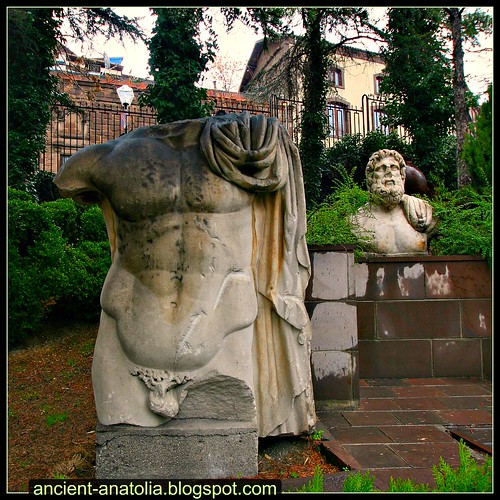
Ankara Zeus, originally uploaded by voyageAnatolia.
Zeus sculptures at Museum of Anatolian Civilizations at Ankara
Zeus, in Greek mythology, is the king of the gods, the ruler of Mount Olympus and the god of the sky and thunder. His symbols are the thunderbolt, eagle, bull, and oak. In addition to his Indo-European inheritance, the classical "cloud-gatherer" also derives certain iconographic traits from the cultures of the ancient Near East, such as the scepter. Zeus is frequently depicted by Greek artists in one of two poses: standing, striding forward, with a thunderbolt leveled in his raised right hand, or seated in majesty.
Zeus was the child of Titan Cronus (Kronos) and Titaness Rhea, divine descendants of Gaia, the earth, and Ouranos, the sky. He was the youngest of his siblings. In most traditions he was married to Hera, although, at the oracle of Dodona, his consort was Dione: according to the Iliad, he is the father of Aphrodite by Dione. He is known for his erotic escapades. These resulted in many godly and heroic offspring, including Athena, Apollo and Artemis, Hermes, Persephone (by Demeter), Dionysus, Perseus, Heracles, Helen, Minos, and the Muses (by Mnemosyne); by Hera, he is usually said to have fathered Ares, Hebe and Hephaestus.
His Roman counterpart was Jupiter and his Etruscan counterpart Tinia. In Hindu mythology his counterpart was Indra with ever common weapon as thunderbolt.